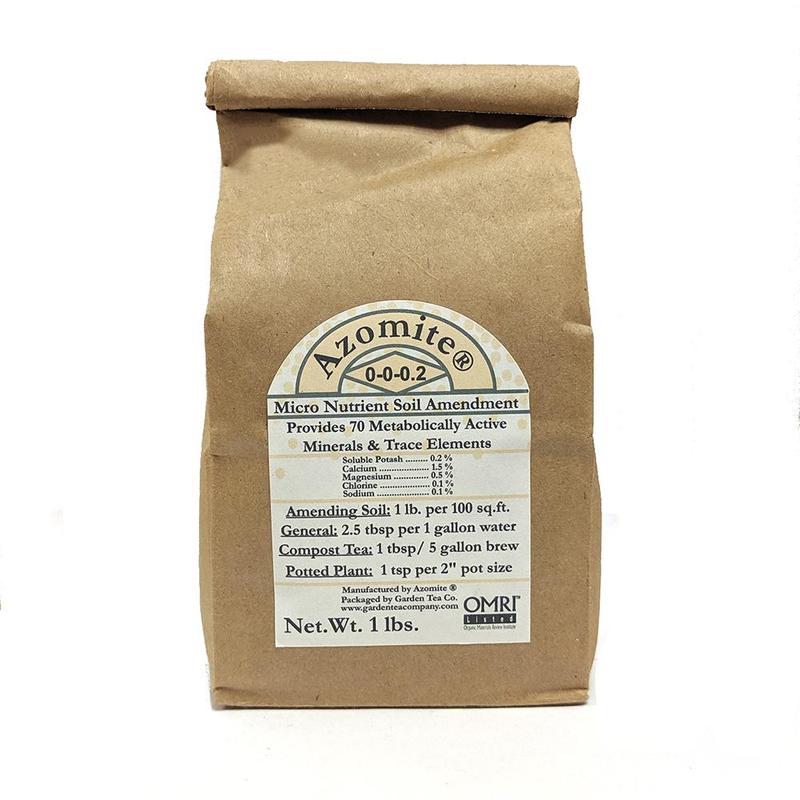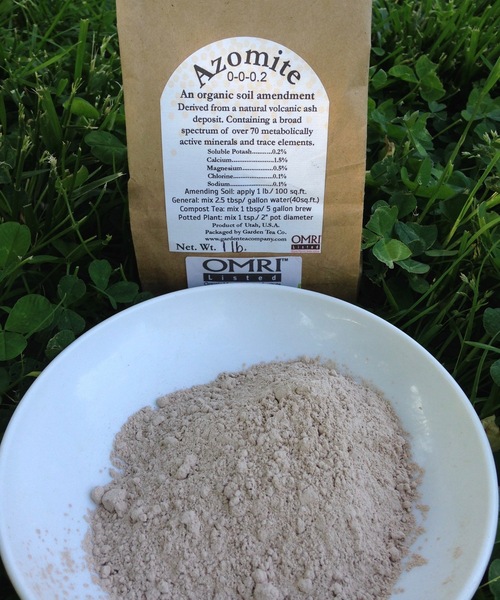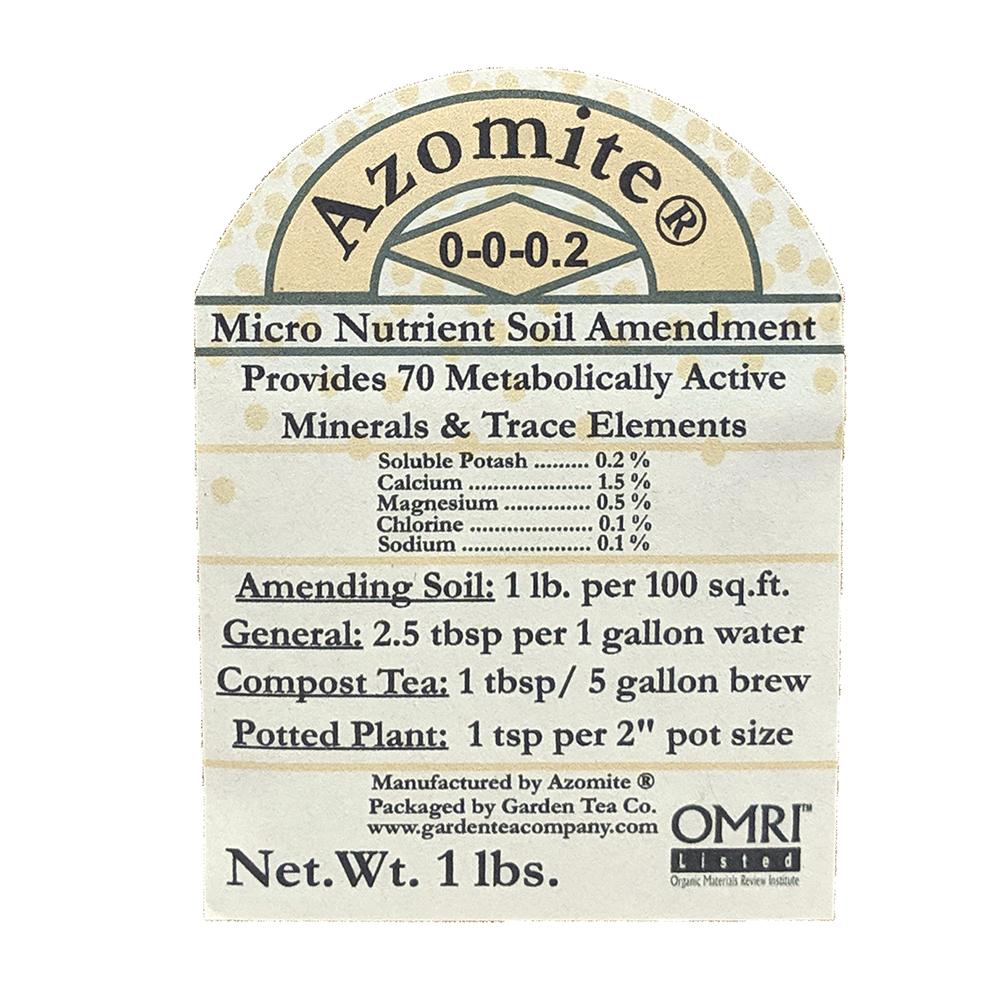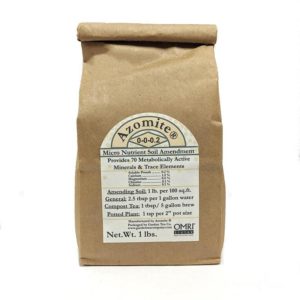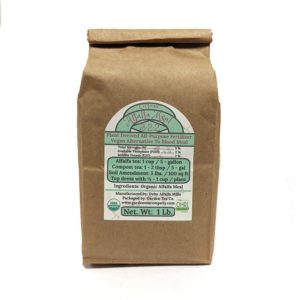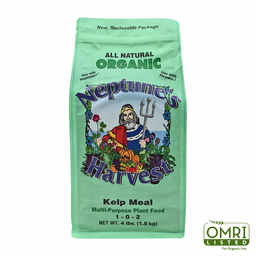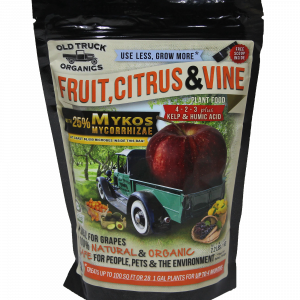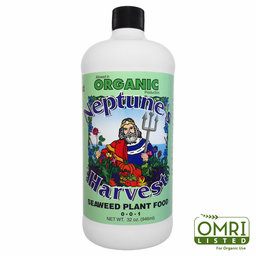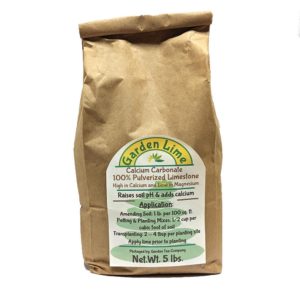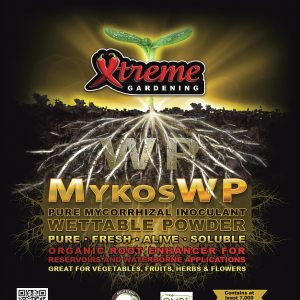Azomite – 1 lb
2,950 د.ك
AZOMITE® (A to Z Minerals) is a natural mineral product that contains a broad spectrum of over 70 metabolically active minerals and trace elements. AZOMITE® has been mined in Utah for more than 60 years. For over sixty years livestock and crop producers have utilized this unique material to improve livestock and plant growth. AZOMITE® requires no mixing, is odorless, and will not burn plants and will not restrict aeration or water penetration. AZOMITE® is not a manufactured, chemically prepared fertilizer. It is 100% natural, OMRI listed, contains no additives, synthetics or fillers.
Mineralogically, the material can be described as a rhyolitic tuff breccia, which is a hard rock formation formed from the dust of a volcano that exploded, much like when Mount St. Helens did in 1980. Its uniqueness does stem from the multitude of trace minerals found in the deposit. Thus the trade name, AZOMITE®, the “A to Z of Minerals Including Trace Elements”. Chemically, AZOMITE® is a hydrated sodium calcium aluminosilicate (HSCAS) containing other minerals and trace elements which the National Research Council recognizes to be essential. HSCAS is listed in the U.S. Code of Federal Regulations (21 CFR 582.2729) as an anti-caking agent, and is generally recognized as safe (GRAS) by the FDA.
 AZOMITE® is OMRI Listed approved for use in organic agriculture.
AZOMITE® is OMRI Listed approved for use in organic agriculture.
Micronized: Ultra-fine powder (-200 mesh) excellent for coating seeds for maximum germination and initial growth. Good mineralizing amendment for crops, compost, for the brewing of compost teas and potting soil.
Application Guidelines:
General Use: Mix 2.5 tbsp. per gallon of water for lawns, gardens, trees and shrubs (will cover 40 sq. ft.)
Compost Tea: Mix 2 tbsp. per 5 gallons of compost tea
Potted plants: Mix 1 tsp. per 2″ pot diameter with potting soil before planting. For houseplants apply 1 tsp. per 2″ pot diameter 4 times each year thereafter.
Transplanting to the Earth: 2 – 3 tbsp. per 4-6″ planting hole
Amending soil: Use AZOMITE® at the rate of 1 lb. per 10 sq. ft. If in rows, mix with the seed or starter plant and apply at the rate of 1 lb. per 25 ft. of row. If bed is established, sprinkle around each plant. AZOMITE® should be applied with compost, humus, manures, or other fertilizers to provide additional levels of nitrogen, phosphorus, and potassium. AZOMITE® will not burn plants. For roses, apply 1/2 lb. to 1 lb. to the soil around each plant and gently work into the top few inches of soil.
AZOMITE® Can also be used as a feed supplement for livestock providing valuable trace elements.
Research indicates using AZOMITE® in feed improves livestock resistance to disease and greatly improves throughput in feed mills.
AZOMITE® has shown numerous benefits as a supplement livestock feed.
Accredited researchers report:
* Improved immune system functions
* Improved feed conversions, size and yield
* Improvements in size and feed conversion using feed contaminated with various mycotoxins
Law of the Minimum: The “father of fertilizer”, Justus von Liebig, developed the “Law of the Minimum” which is important in understanding what AZOMITE® does. The Law states that plant growth is determined by the scarcest, “limiting” nutrient; if even one of the many required nutrients is deficient, the plant will not grow and produce at its optimum. Conventional fertilizer programs focus on macro-nutrients like Nitrogen (N), Phosphorous (P) and Potassium (K). However, if one of the many essential trace elements is deficient in the soil, the plant will not perform at its optimum, affecting yield and immune function. AZOMITE® contains rare and abundant trace elements present in volcanic ash in addition to rich minerals present in rivers – a unique combination found nowhere else on Earth.
FAQ:
What is AZOMITE®?
AZOMITE® is unique highly mineralized ore that is a complex silica (Hydrated Sodium Calcium Aluminosilicate or HSCAS) mined in Utah from a deposit left by an ancient volcanic eruption that was ejected out of the side of a mountain. The volcanic ash filled a small nearby sea bed. The combination of seawater, fed by hundreds of rivers rich in minerals, and the rare and abundant minerals present in volcanic ash created the AZOMITE®deposit which is found nowhere else on Earth. The deposit is very old, perhaps as much as 30 million years. Today the geologic characteristic is an outcropping known as a hogback.
Where does AZOMITE® come from?
AZOMITE® is unique silica montmorillonite that is mined in Utah from deposits left by an ancient volcano eruption that was ejected out of the side of a mountain and filled a nearby lake bed. This combination of seawater, fed by hundreds of rivers rich in minerals, and the rare and abundant minerals present in volcanic ash created the AZOMITE® deposit which is found nowhere else on Earth. The deposit is very old, perhaps as much as 30 million years. Today the geologic characteristic is as an outcropping know locally as a hogback. For pictures of the AZOMITE® mine, click here.
What is AZOMITE® composed of?
In a typical chemical assay, AZOMITE® contains more than 70 trace minerals which include many rare earth elements (lanthanides). Many of these elements have been depleted from soils worldwide. For a complete typical analysis of AZOMITE®, click here.
What is the “Law of the Minimum”?
The “father of fertilizer”, Justus von Liebig, developed the “Law of the Minimum” which is important in understanding what AZOMITE® does. The Law states that plant growth is determined by the scarcest “limiting” nutrient; if even one of the many required nutrients is deficient, the plant will not grow and produce at its optimum. Conventional fertilizer programs focus on the macro-nutrients like Nitrogen (N), Phosphorus (P) and Potassium (K). However, if one of the many essential trace elements is deficient in the soil, the plant will not perform at its optimum, affecting yield and immune function.
Will AZOMITE® work on any soil?
If a soil has a very high or very low pH, many of the trace elements may become unavailable to the plant. Otherwise, AZOMITE® has worked in a variety of soils all over the world.
How is AZOMITE® applied to the soil?
AZOMITE® is available in several forms. Micronized AZOMITE® is processed into a fine powder that is around -200 mesh. Granulated AZOMITE® is available for easy soil application in a broadcast spreader. A coarser product, AZOMITE® Slow-Release, is also available for soil use; however, it is dustier than the Granulated AZOMITE®. As long as AZOMITE® is in the root zone, the plant will benefit. Most farmers apply AZOMITE® directly to the soil at planting. Water will ensure that the roots are able to reach the trace elements.
What effect does AZOMITE® have on plants?
Generally, plants with AZOMITE® added have more and larger fruits and vegetables per plant, have more resistance to disease and have better tasting food products. AZOMITE® has shown results in a wide variety of plants in the field and in the laboratory.
What types of plants is AZOMITE® effective on?
AZOMITE® has proven results – scientific or anecdotal – in many species of plant including but not limited to: wine grapes, table grapes, sugarcane, potatoes, rice, watermelon, tomatoes, melons, cantaloupes, onion, garlic, papaya, lemons, oranges, cocoa, coffee, mango, oaks, pines, peaches, chilies, berries, eggplant, tobacco, ornamental, wheat, corn, and many others. It is not surprising that AZOMITE® should work in many more types of plants because most require the same types of trace elements that the soil is often lacking.
Aren’t all the minerals necessary for plant growth already in the soil?
In most cases, no. The world’s cropland has been under cultivation for many decades and each crop cycle removes trace minerals from the soil or the elements are lost through erosion. Since most fertilizer programs only replace Nitrogen (N), Phosphorus (P) and Potassium (K), crops become deficient when the soil has been depleted of the trace elements. Of course, plants can complete their life cycle without the full range of minerals but they will not produce at their full potential or be healthy and adequately resistant to disease. See What is the “Law of the Minimum”?
How is AZOMITE® different from fertilizer?
Most conventional fertilizers contain mainly Nitrogen (N), Phosphorus (P) and Potassium (K), which are called macro nutrients. Plants require macro nutrients in large amounts. NPK are only three of the essential nutrients required by plants; unfortunately, when choosing a fertility program, growers often neglect all of the trace minerals and only use NPK. For plants to complete their life cycle and produce at full potential, a wide range of minerals is necessary; AZOMITE®supplies that essential wide range, from A to Z. AZOMITE® is not created in a laboratory and its nontoxic composition does not harm the environment.
If a farmer uses AZOMITE ®, can other fertilizer be reduced?
AZOMITE® is a trace element supplier but does not provide Nitrogen (N) or Phosphorus (P) but does provide some Potassium (K). Therefore, farmers should not reduce any part of their fertility program that provides N or P. By using AZOMITE®, farmers can reduce other silicate-based fertilizers or micro-nutrient providers but it is difficult to say how much without a soil analysis. AZOMITE® has shown increased yields and improved disease resistance even in addition to a complete fertility program.
How fast can farmers see results with AZOMITE®?
This depends on a multitude of factors, like soil quality, application rates, soil pH, etc. Most farmers report a more rapid rate of growth and increased yields within one harvest, but this may depend on the type of crop grown.
Is AZOMITE® organic?
AZOMITE® is listed by the Organic Materials Review Institute (OMRI) for use in organic production. AZOMITE® is simply mined, crushed and sold.
Is AZOMITE® a bentonite?
No, Bentonite is an adsorbent aluminum phyllosilicate. AZOMITE® is a Hydrated Sodium Calcium Aluminosilicate (HSCAS), and does not swell.
Is AZOMITE® a rock dust?
No, it is volcanic in origin, rather than glacial. It is a mineralized, compacted volcanic ash. Chemically, AZOMITE® is a hydrated sodium calcium aluminosilicate (HSCAS) containing minerals and trace elements.
Does AZOMITE® contain heavy metals?
Yes, but in lesser amounts than exist in a typical soil. AZOMITE® is Generally Recognized as Safe (GRAS) by the US Food & Drug Administration (FDA).
Is the lead in AZOMITE® harmful?
The FDA and American Association of Feed Control Officials establish strict guidelines for the amount of various natural contaminates that show up in all types of feed ingredients. At 6.2ppm, AZOMITE® is well below the guidelines for allowed lead in natural feed stuffs.
What is the pH of AZOMITE®?
The pH of AZOMITE® is 8.0.
Do you sell AZOMITE® for human consumption?
We do not market AZOMITE® for human consumption. Because we do not market it, we do not provide testimonies or research on our website. However, we are aware of people using it as a mineral supplement at a rate of 1 to 2 teaspoons per day, and we hear positive stories every week on the phone.
Boron (B) – It helps move sugars from cell to cell; control starch formation; stimulates cell division, flower formation and pollination.
Calcium (Ca) – Raw material for holding cell walls; raises pH; aids genetic stability; promotes root hair formation and earth; stiffens straw.
Chlorine (Cl) – Needed for photosynthesis; stimulates root growth and aids water movement in plants.
Cobalt (Co) – Needed by Rhizobium for nitrogen fixation; helps form vitamin B12; improves growth, water movement and photosynthesis; improves growth, water movement and photosynthesis; improves boll production in cotton; activates certain enzymes.
Copper (Cu) – Enzyme activator, particularly for certain protein forming enzymes and Vitamin A forming enzymes; it stimulated stem development and pigment formation.
Iron (Fe) – Raw material for several enzymes including those that form chlorophyll and those that help oxidize (burn) sugar for energy; also necessary for legume nitrogen fixation.
Magnesium (Mg) – Raw material for chlorophyll formation; activates enzymes particularly those involved with nitrogen reactions and energy metabolism; it increases oil production n flax and soybeans; helps regulate uptake of other elements.
Molybdenum (Mo) – Needed for nitrogen fixation and nitrogen use in the plant; specifically it is needed to make amino acids; it stimulates plant growth and vigor very much like nitrogen.
Nitrogen (N) – Raw material for proteins, chlorophyll, and genetic material (DNA and RNA); stimulates vegetative growth.
Phosphorous (P) – Raw material of genetic material (DNA and RNA) and for energy carrying compounds (ATP and ADP); stimulates fruit, seed and root production and early season growth; increases winter hardiness.
Potassium (K) – Necessary for sugar movement from leaves to developing fruits and seeds and for starch formation. It helps water movement; stimulates fruit, seed and root production and increases disease resistance; increases red pigment in fruits.
Silicon (Si) – Increases the number of seeds (particularly in rice and other grains); increases sugar cane growth.
Sodium (Na) Necessary for proper carbohydrate production and use; increases resistance to drought; increases sugar content in some crops (sugar beets).
Sulfur (S) Raw material for certain amino acids and thus for proteins; necessary for legume nodule formation; raw material for certain oil compounds that give specific odors to some plants such as onions, garlic, mustard, etc; it is also a raw material for certain protein forming enzymes; it increases oil production in flax and soybeans.
Zinc (Zn) Raw materials for several enzymes including those that form growth controlling substances; stimulates stem growth and flower bud formation.
غير متوفر في المخزون


